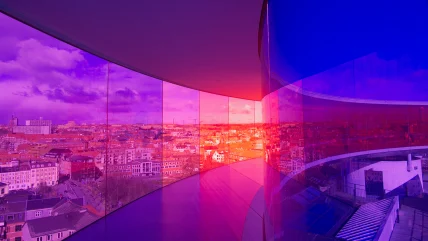
THE AROS art museum, located in Denmark’s second city, Aarhus, thinks big when it comes to commissioned art installations. Olafur Eliasson’s Your Rainbow Panorama (2011), the 150m circular, multi-coloured walkway that crowns the building and offers 360° tinted views across the city, not only affirmed its ambitions but firmly stamped it on the international art map. A new, equally ambitious and much-anticipated project will also centre on light art as architectural feature.
This year will see the opening of its long-awaited 4,000m2 subterranean extension by Schmidt Hammer Lassen (SHL), architect of the ten-storey building that became the new home of the 1859 museum in 2004. Known as the Next Level, its centrepiece will be The Dome, developed with renowned US artist James Turrell, leading figure of the 1960s Light and Space movement, and particularly known for his immersive Skyspaces, some 85 to date, of varying scale.
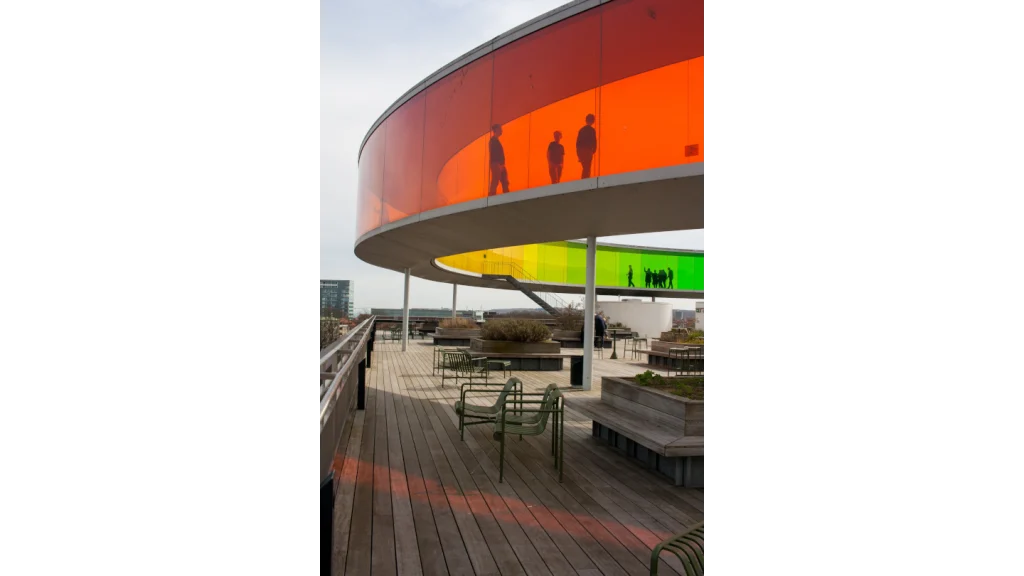
His most renowned project and largest Skyspace is the ongoing (since 1977) conversion of the Roden Crater in Arizona into a vast ‘gateway to the contemplation of light, time and landscape’. The Dome at ARoS will be the second largest overall, and the largest Skyspace in the world in a museum context.
Under development for more than ten years, the extension from the beginning involved a vision of adding a new artwork to the ARoS collection by an artist working in large scale to create unique environments. The museum has described it as ‘a once-in-a-generation transformation to emerge as one of the most innovative institutions in which to engage with transformative art experiences at scale’.
At 40m in diameter and 16m high ‘it will form one of the most spectacular spaces ever built into an art museum’, says SHL. The dome shape is formed using 30 enormous fibreglass panels, each 21m long and weighing 1,100kg. The panels will be sprinkled with 40cm of concrete and soil, with Turrell completing the work with his characteristic light installations inside the dome.
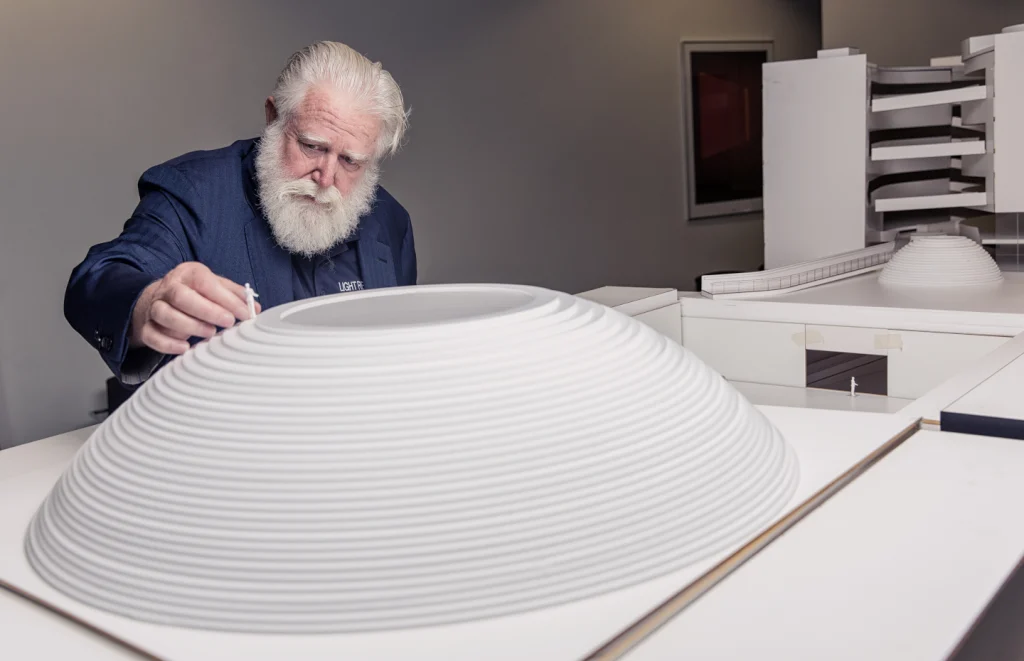
The Dome is inspired by the Pantheon, featuring a 6m-wide oculus open to the elements. ‘We are not challenging the Pantheon,’ Turrell has said. ‘The Pantheon is 43m in diameter… We do want to be modest.’
‘Our studio is not just designing a new room for a new artwork, we are co-creating the space and the installation simultaneously with James Turrell,’ Morten Schmidt of SHL has said of the venture.
The journey to The Dome will start on ARoS Level 3, taking visitors down a long light-filled corridor that forms a sensory prelude to entering the monumental installation. Turrell’s distinctive lighting will wash the entire domed space and frame the endless sky, seen through the large central aperture. ‘The Dome is a collective experience driven by light and the poetry of seasons to emphasise our relationship to nature, the sky, and our shared planet,’ says ARoS.
The museum expansion also offers a public art square and a new, subterranean gallery: a dedicated space for annual contemporary commissions, especially for artists working with film, video, installation and performance to create site-specific works at formative moments in their careers.
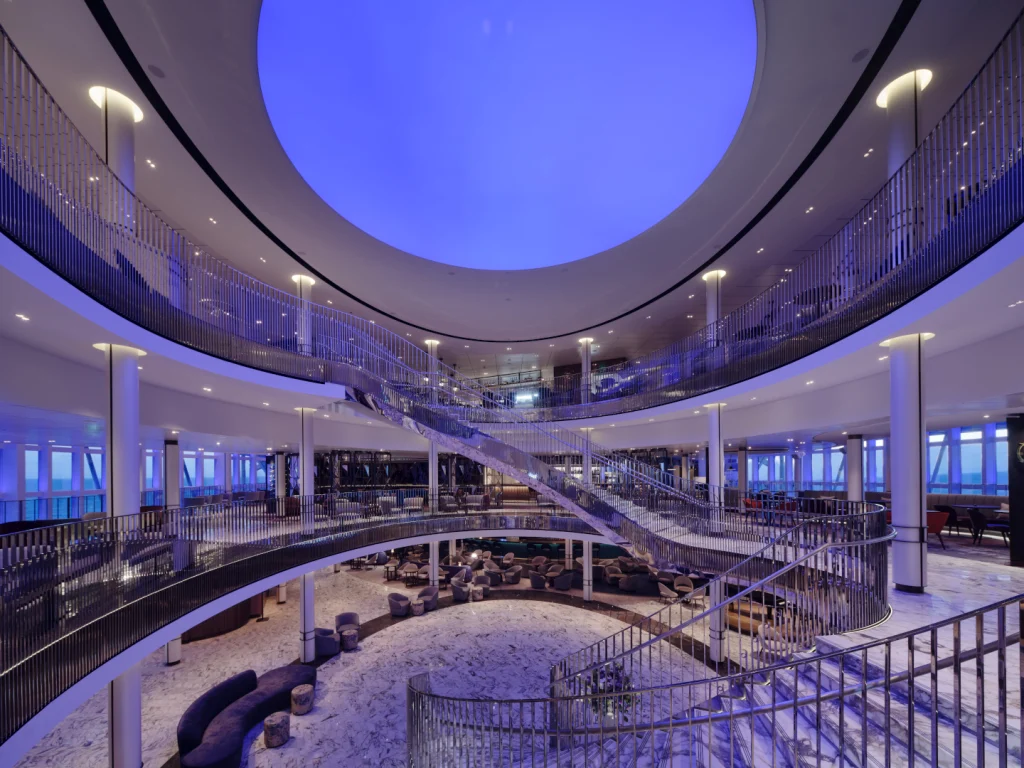
‘The museum is stacked so that it takes you up to an “astral” level where you experience [Eliasson’s] installation and the city from the inside but it is a kind of “extrovert” experience of colour,’ explained Schmidt in an interview with Lighting magazine. ‘The Turrell installation will be very different.’
In other words, while the journey to the Eliasson work is a vertical one (visitors ascend a spiral staircase from the basement, through the museum levels and galleries, and up to the roof), the path to the Turrell installation is horizontal, a long, sweeping horizontal passage, which takes the visitors below ground. ‘Two journeys, which both culminate in awe-inspiring, building-scale art installations, centred on colour, space, light and human perception,’ says SHL.
The first encounter in the Next Level is with a sphere hanging rather than resting on the floor, so that it appears weightless. ‘That is the primary experience,’ continued Schmidt. ‘The secondary stage is stepping into it and perceiving the colour inwardly. Being inside The Dome from inside, will be a fantastic experience – psychedelic for most people. The complementary colours you will experience will be an inner experience. You will never know if your fellow is seeing the same colour.’
Or as Turrell has put it: ‘I always wanted to make a light that looks like the light you see in your dream. Because the way that light infuses the dream, the way the atmosphere is coloured, the way light rains off people with auras and things like that… We don’t normally see light like that. But we all know it. So this is no unfamiliar territory – or no unfamiliar light. I like to have this kind of light that reminds us of this other place we know.’ www.aros.dk/en/art/the-next-level
‘My inspirations have really come from the greats, but not so much in the architectural lighting field – it’s really been more about the work of Dan Flavin or Carl Andre or James Turrell. Those are really the folks that have taught me most about light.’
– Rand Elliott of multi-award winning Rand Elliott Architects
LIGHT ART AT AROS
Level 0, the subterranean basement gallery at ARoS, is reserved for international light art, video art and installations. They include works by Eliasson (Surroundings, 2007), Turrell (Milkrun III, 2002), Mariko Mori (TomNa H-Iu, 2006) and an installation by the Swiss video artist Pipilotti Rist, which recreates a day’s worth of dynamic light in eight minutes, in a space resembling a sitting room.
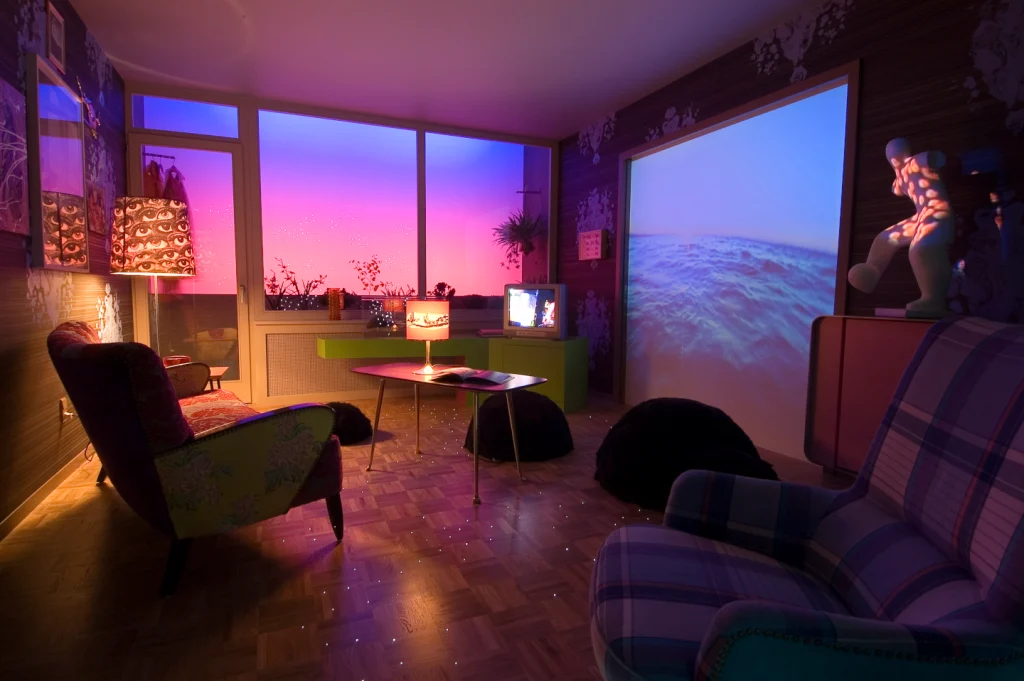
ARoS has also acquired Eliasson’s Inverted Panorama House and Your Atmospheric Colour Atlas, both of which use light, colour and movement to subvert perceptions. The Inverted Panorama House uses light from a single white source projected onto rotating glass plates to throw visitors’ shadows and colour reflections onto a surrounding screen. In Your Atmospheric Colour Atlas the viewer enters a disorientating, dense mist lit from above in red, green and blue to create colour zones.
Turrell’s Miilkrun III greets the viewer with a smouldering field of red light. The piece is intended to be more meditative than spectacular in its effect.
MS IONA CRUISE SHIP, P&O CRUISES (2020)
LIGHTING DESIGN: DPA LIGHTING CONSULTANTS
The Grand Atrium is the centrepiece of the interior, designed by Jestico+Wiles, spanning port and starboard in cross section and allowing a visual connection to the sea through the vast glazed elevations. These provide an abundance of natural light and views to sunrises and sunsets. The atrium’s sinuous silver staircase is a sculptural link between the themed food and beverage spaces.
The Turrell influence
‘A striking backlit ceiling feature presents a dramatic lightweight capping to the three-deck-high atrium void, with the illusion of the ‘sky’ hovering above, inspired by the Skyspaces of James Turrell,’ says DPA.
VEDANTA HQ, MAYFAIR, LONDON (2018)
LIGHTING DESIGN: NULTY
A monolithic sliding door in the reception of Vedanta (an international minerals, power and energy companies group) opens to a ‘hall of mirrors’ with a series of bespoke oculus ‘moon’ luminaires. The motion-sensitive luminaires sit within a sculptured Corian ceiling and come to life when people walk under them, changing the colour of the space and projecting pools of light that replicate shafts of daylight.
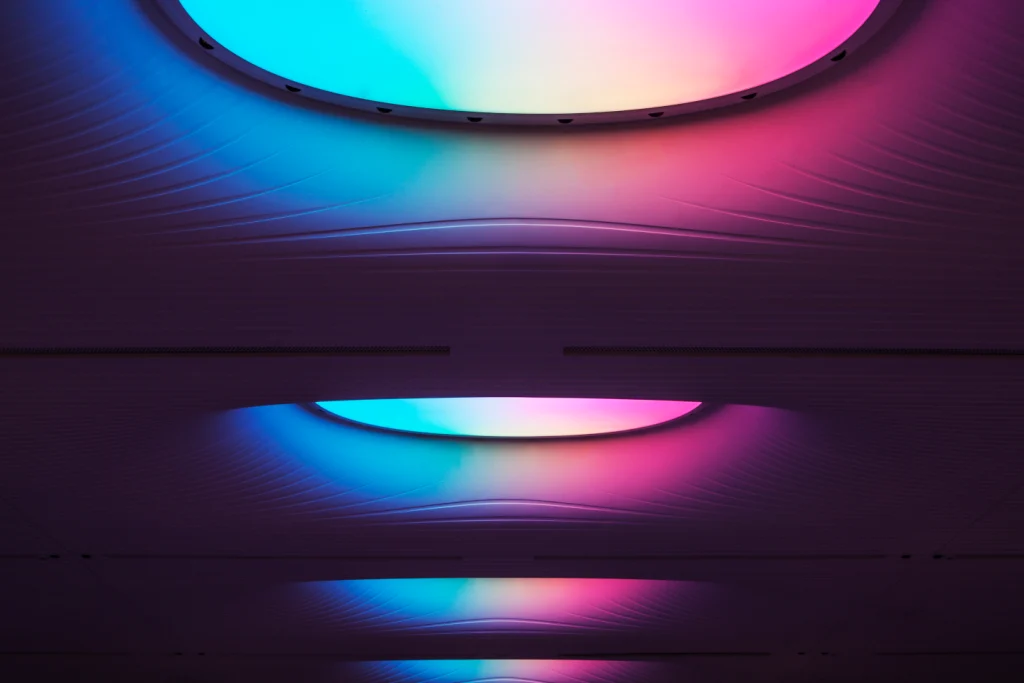
The Turrell influence
‘Vedanta’s headquarters is an uber-flexible executive space with chameleon-like design features that needed an equally ambitious lighting scheme… The project takes inspiration from Turrell’s innovative use of colour and perception. Elliptical lights recessed in the ceiling alternate between dynamic white light and colour-changing effects, creating a space that is continually shifting and evolving,’ says Nulty.





